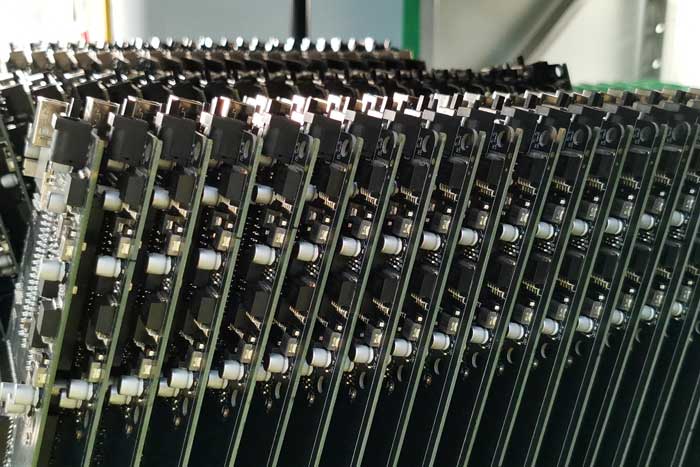With the rapid advancement of the electronics industry, PCB assembly technology is continuously evolving. Among these advancements, lead-free soldering technology stands out as an eco-friendly and efficient method that is increasingly becoming the standard in the industry. This article will focus on the application and benefits of lead-free soldering technology in PCB assembly.
Traditional soldering techniques have used solders containing lead, which, while improving the solder’s flowability and lowering its melting point, pose serious environmental and health hazards. In response to the need to reduce lead pollution, international regulations have been implemented to restrict the use of lead-containing solders. This has led to the development of lead-free soldering technology.
Lead-free soldering refers to the use of solder alloys that do not contain lead, such as Sn-Ag-Cu (tin-silver-copper) alloys, during the electronic assembly process.
Application of Lead-Free Soldering in PCB Assembly
1 Soldering Process Optimization
Lead-free solders have higher melting points than leaded solders, necessitating adjustments to soldering parameters such as temperature and time. Proper control of these parameters can effectively improve soldering quality and reduce defects in solder joints.
2 Selection of Flux
The choice of flux is crucial in lead-free soldering. Lead-free fluxes should have good activity to effectively remove oxides from the soldering surfaces, enhancing the wettability of the solder. Additionally, lead-free fluxes should have low corrosiveness and good thermal stability.
3 Upgrading Soldering Equipment
Lead-free soldering imposes higher demands on equipment, which must provide precise temperature control and good thermal uniformity to ensure soldering quality. Moreover, some lead-free solders require nitrogen gas shielding, leading to the wider application of nitrogen gas shielded soldering equipment.
Benefits of Lead-Free Soldering Technology
1 Environmental Friendliness
Lead-free soldering reduces the use of hazardous substances like lead, decreasing the environmental impact of electronic products and promoting ecological and human health.
2 High Reliability
Lead-free solders offer higher mechanical and thermal cycling performance, resulting in more robust solder joints and enhancing the reliability of PCBs.
3 Compatibility
Lead-free soldering is suitable for a variety of PCB materials and components, demonstrating good compatibility. Additionally, lead-free solders have a certain level of compatibility with leaded solders during the transition, facilitating the shift for manufacturers.
4 Cost Efficiency
As lead-free soldering technology becomes more widespread, the cost of lead-free solder alloys has decreased. Furthermore, the technology can improve production efficiency and reduce the rate of defective products, thereby lowering overall costs.
The application of lead-free soldering technology in PCB assembly represents the inevitable trend towards a greener electronics industry. Although lead-free soldering presents challenges in terms of process and equipment requirements, its environmental, efficient, and reliable advantages make it the mainstream approach in the industry. As lead-free soldering technology continues to mature, its application in the electronics field is expected to become even more widespread, contributing to the sustainable development of China’s electronics industry.



